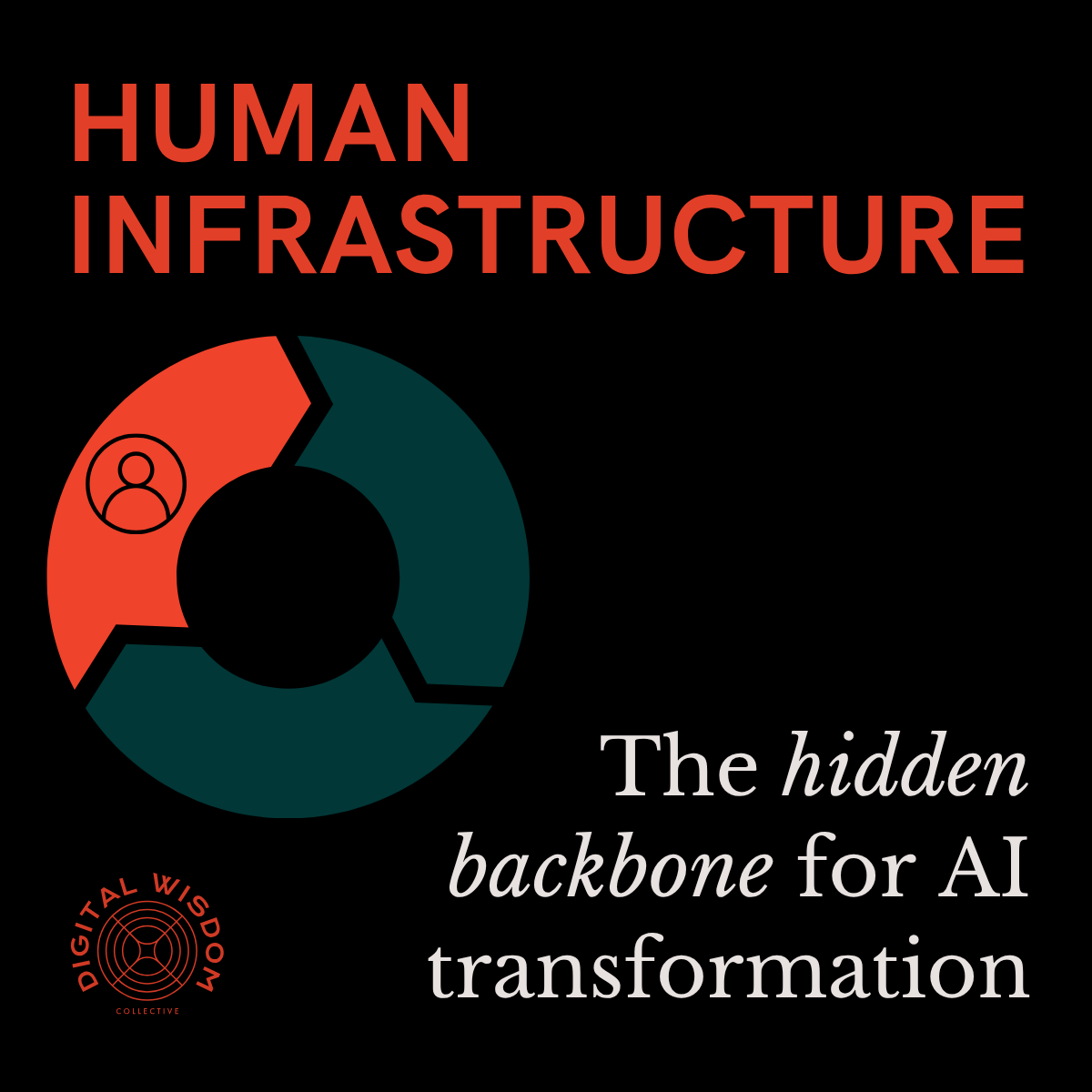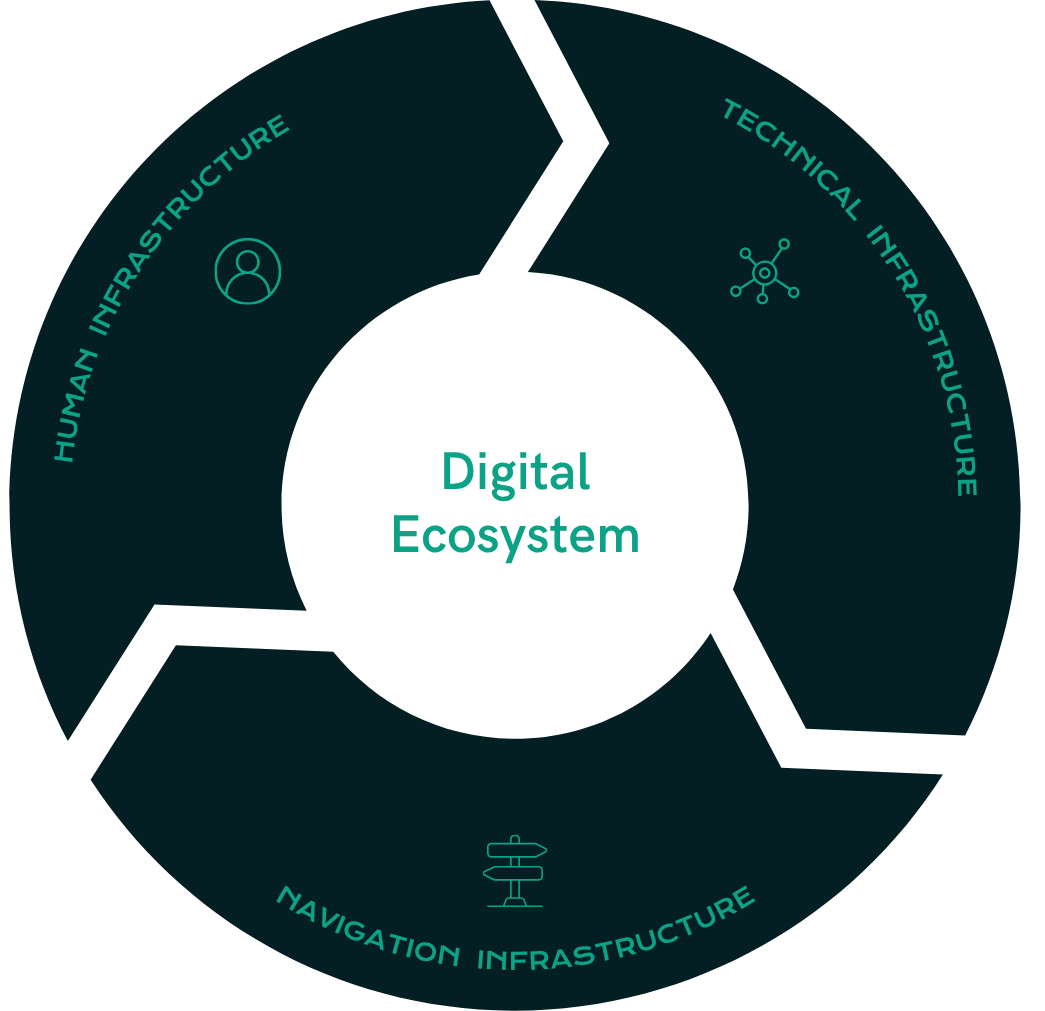Human Infrastructure: The Hidden Backbone of AI Transformation
Ask an executive about digital infrastructure and they'll probably point to their tech stack first: applications, cloud architecture, security protocols, governance models.
But there's another layer that’s often overlooked. It’s less visible, but just as critical.
Human Infrastructure is the hidden backbone that determines whether your digital investments deliver value or gather dust.
What’s Human Infrastructure?
Human Infrastructure is the network of people, relationships, knowledge flows, and norms that enable work to actually happen inside an organization. It's the living connective tissue between strategy and execution and embodies the capacity to align, collaborate, and adapt when technology changes.
It shows up in:
Mid-level leaders who bridge the gap between business vision and technical reality
Shared mental models that help teams work across silos without endless meetings
Teams’ confidence to spot problems and voice concerns before they derail projects
Trust networks that carry initiatives across the finish line when processes break down
Informal knowledge flows that embed wisdom and make complexity navigable
Why is it Hidden?
Human infrastructure doesn't live in a line item or a software license, and it doesn't show up in architectural diagrams or strategic roadmaps.
It lives in how people behave, how they coordinate, and how quickly they can course-correct when plans meet reality.
It’s also an easy thing to take for granted. Companies assume they can layer new technology onto their existing stack and expect transformation to naturally follow.
They invest heavily in technical infrastructure — cloud platforms, data lakes, AI tools — and underinvest in the human capacity to use these systems wisely and effectively.
The truth is that human infrastructure takes time and intention to build. When it’s missing, the symptoms are painfully familiar:
Tech platforms that never reach adoption targets
Projects that stall between strategy and execution
Consultants brought in to translate ideas your own people already had
The same integration challenges surfacing with every new system
Why does it matter now?
In the age of AI, human infrastructure will separate organizations that experiment endlessly from those that scale sustainably.
New capabilities, platforms and tools are proliferating faster than ever, growing like weeds in the digital wilderness. Without intentional cultivation, you’ll get chaos: overlapping tools, fragmented workflows, and people who feel lost trying to navigate it all.
The organizations that thrive will be those that can integrate new capabilities quickly, coordinate across boundaries smoothly, and adapt as conditions change.
It starts in the middle of the organization — the overlooked layer where digital initiatives actually succeed or fail. Here you find the bridge-builders, dot-connectors, and cross-functional problem-solvers who turn technical possibility into business reality.
When you strengthen human infrastructure by investing in the people who sit in this critical layer, you reduce dependency on external consultants, accelerate implementation timelines, and build internal wisdom that compounds with each new initiative.
The Three-Part Digital Ecosystem
Human infrastructure isn’t built in isolation. We think of a digital ecosystem as needing three essential types of infrastructure working in harmony:
Technical Infrastructure — The built systems: platforms, tools, data architectures, integrations. This is what most IT budgets optimize for.
Human Infrastructure — The connective tissue in an organization, including the people who tend the ecosystem, build bridges between silos, and develop the organizational capacity to use everything else effectively.
Wayfinding Infrastructure — The wayfinding systems that help people navigate complexity: documentation, decision frameworks, process maps, dashboards. The trail markers that prevent people from getting lost in the digital wilderness.
Most organizations invest heavily in the technical side, while neglecting wayfinding infrastructure and hoping the human side will figure itself out naturally.
(Pro tip: it won’t.)
The Backbone You Can’t Ignore
Without human infrastructure, your digital ecosystem isn’t complete. It's the connective tissue that holds tech adoption and transformation initiatives together. It only works when you invest in keeping it strong.
That's why developing human infrastructure belongs in IT operating budgets — not as a one-time training program or a silo’ed HR initiative. Rather as an ongoing investment in the capacities that make your technical infrastructure perform at its best.
The real competitive advantage in the AI era is about having the human capacity to integrate tech wisely, adapt it quickly, and scale it sustainably.
Ready to assess your Human Infrastructure? Take our Digital Wisdom Maturity Assessment to see where you stand today and book a discovery call to explore how we help organizations build sustainable digital ecosystems.


